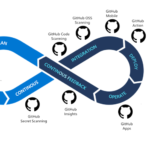Introduction
Quantum computing and artificial intelligence (AI) are revolutionizing the technological landscape, promising unprecedented computational power and intelligent automation. However, alongside their transformative potential, these emerging technologies pose significant challenges and opportunities for cybersecurity. In particular, protecting data in use-the data actively processed by applications-has become a critical concern as quantum and AI capabilities evolve. This blog post dives deep into how these technologies impact security, explores practical tools and strategies to safeguard data, and provides a comprehensive checklist of best practices for cybersecurity professionals navigating this new frontier.
Understanding Quantum Computing and AI in the Context of Cybersecurity
What is Quantum Computing?
Quantum computing leverages principles of quantum mechanics-such as superposition and entanglement-to perform computations at speeds unattainable by classical computers. Unlike classical bits, quantum bits (qubits) can exist in multiple states simultaneously, enabling complex problem-solving and data processing tasks that could take classical computers millennia to solve.
Artificial Intelligence and Its Role in Security
AI involves machines simulating human intelligence to perform tasks like learning, reasoning, and decision-making. In cybersecurity, AI powers threat detection, anomaly identification, and automated response systems, making defenses more adaptive and proactive.
The Intersection of Quantum Computing and AI
Quantum computing can accelerate AI algorithms by processing vast datasets more efficiently, enhancing AI’s predictive and analytical capabilities. Conversely, AI can optimize quantum algorithms and error correction, creating a symbiotic relationship with profound implications for cybersecurity.
Protecting Data in Use: The New Frontier in Security
What is Data in Use?
Data in use refers to data actively being processed by applications or systems, as opposed to data at rest (stored) or data in transit (being transmitted). Protecting data in use is challenging because it is often decrypted and vulnerable during processing.
Why Protecting Data in Use Matters More Now
- Quantum Threats: Quantum computers threaten to break current encryption standards, potentially exposing sensitive data during processing.
- AI-Powered Attacks: AI can automate sophisticated cyberattacks, targeting data in use with precision and speed.
- Increased Data Processing: With cloud computing and IoT, data in use is more widespread, increasing exposure risks.
Techniques for Protecting Data in Use
- Homomorphic Encryption: Allows computations on encrypted data without decrypting it, preserving confidentiality.
- Secure Enclaves / Trusted Execution Environments (TEEs): Hardware-based isolated environments that protect data during processing.
- Multi-Party Computation (MPC): Enables multiple parties to jointly compute a function over their inputs while keeping those inputs private.
- Quantum-Resistant Cryptography: Algorithms designed to withstand attacks from quantum computers.
Security Challenges Posed by Quantum Computing and AI
Quantum Computing Risks
- Breaking Encryption: Quantum algorithms like Shor’s algorithm can factor large numbers efficiently, threatening RSA and ECC cryptosystems.
- Data Integrity Threats: Quantum attacks could manipulate data in use or in transit undetected.
- Transition Complexity: Migrating to quantum-safe cryptography is complex and resource-intensive.
AI-Driven Security Challenges
- Automated Attacks: AI can craft phishing, malware, and intrusion attempts more effectively.
- Adversarial AI: Attackers can manipulate AI models to evade detection or cause false positives/negatives.
- Data Poisoning: Corrupting training data to degrade AI security tools.
Practical Tools and Frameworks to Secure Emerging Technologies
Quantum-Safe Cryptography Tools
- Open Quantum Safe (OQS) Project: An open-source initiative providing quantum-resistant cryptographic algorithms and libraries.
- Google’s Post-Quantum Cryptography Experiments: Testing hybrid encryption schemes in Chrome to prepare for quantum threats.
AI Security Platforms
- Darktrace: Uses AI for real-time threat detection and autonomous response.
- CrowdStrike Falcon: AI-driven endpoint protection platform.
- Microsoft Azure Sentinel: Cloud-native SIEM with AI-powered analytics.
Secure Enclave Technologies
- Intel SGX (Software Guard Extensions): Provides hardware-based TEEs to protect data in use.
- AMD SEV (Secure Encrypted Virtualization): Encrypts virtual machine memory to protect data during processing.
Emerging Frameworks and Standards
- NIST Post-Quantum Cryptography Standardization: Ongoing efforts to standardize quantum-resistant algorithms.
- ISO/IEC 27001: Information security management framework adaptable to emerging tech risks.
Case Studies: Real-World Examples
1. Google’s Quantum Experiment and Security Implications
Google’s demonstration of quantum supremacy in 2019 showcased the potential for quantum computers to outperform classical ones on specific tasks. While not yet breaking encryption, this milestone accelerated efforts to develop quantum-resistant security protocols globally. For more details, visit Google AI Blog.
2. Darktrace’s AI-Powered Cyber Defense
Darktrace employs AI algorithms to detect and autonomously respond to cyber threats in real time. Its AI models adapt to emerging attack patterns, protecting data in use across networks and endpoints. This approach exemplifies how AI enhances cybersecurity defenses. Learn more at Darktrace.
3. Intel SGX in Financial Services
Financial institutions use Intel SGX to protect sensitive computations, such as processing encrypted transactions or customer data, ensuring confidentiality even in hostile environments. This hardware-based approach mitigates risks associated with data in use. More info at Intel SGX.
Step-by-Step Guide to Protecting Data in Use with Emerging Technologies
- Assess Your Data Environment: Identify where sensitive data is processed and the current protection measures.
- Implement Hardware-Based TEEs: Deploy secure enclaves like Intel SGX or AMD SEV for critical workloads.
- Adopt Quantum-Resistant Cryptography: Begin integrating NIST-approved post-quantum algorithms into encryption workflows.
- Leverage Homomorphic Encryption: For applications requiring computation on sensitive data, explore homomorphic encryption libraries.
- Integrate AI-Powered Security Tools: Use AI-driven detection and response platforms to monitor data usage and detect anomalies.
- Train Teams on Emerging Threats: Educate cybersecurity staff about quantum and AI-related risks and mitigation techniques.
- Continuously Monitor and Update: Stay current with evolving standards and update security protocols accordingly.
Challenges and Solutions for Practitioners
Challenge: Complexity of Quantum-Safe Transition
Solution: Start with hybrid cryptographic systems combining classical and quantum-resistant algorithms to ensure smooth migration.
Challenge: AI Model Vulnerabilities
Solution: Implement adversarial training and continuous model validation to harden AI against manipulation.
Challenge: Performance Overhead of Advanced Encryption
Solution: Optimize cryptographic implementations and selectively apply heavy encryption only where necessary.
Challenge: Skill Gaps in Emerging Tech Security
Solution: Invest in ongoing training, certifications, and collaboration with research institutions.
Future Outlook and Emerging Trends
- Widespread Adoption of Quantum-Resistant Cryptography: As quantum hardware matures, standards will become mandatory.
- AI-Augmented Cybersecurity Automation: Increased use of AI for predictive threat hunting and automated remediation.
- Integration of Quantum Computing in Security Testing: Using quantum simulations to test cryptographic resilience.
- Expansion of Confidential Computing: Growth in hardware and software solutions protecting data in use.
- Regulatory Evolution: Governments will introduce new compliance requirements addressing quantum and AI risks.
Checklist: Best Practices for Securing Data in Use with Quantum & AI Technologies
- Conduct comprehensive risk assessments focused on data in use.
- Deploy hardware-based Trusted Execution Environments (TEEs).
- Incorporate quantum-resistant cryptographic algorithms early.
- Use homomorphic encryption for sensitive computations where feasible.
- Implement AI-driven monitoring and anomaly detection tools.
- Regularly update AI models to defend against adversarial attacks.
- Train security teams on emerging quantum and AI threats.
- Maintain hybrid cryptography during transition periods.
- Collaborate with industry consortia and standards bodies.
- Plan for continuous security updates aligned with technological advances.
Conclusion
Quantum computing and AI are reshaping the cybersecurity landscape, introducing both powerful tools and formidable challenges. Protecting data in use has become paramount as these technologies evolve, demanding innovative approaches like homomorphic encryption, secure enclaves, and quantum-resistant cryptography. By understanding the risks, adopting cutting-edge tools, and following best practices, organizations can safeguard their critical data and maintain trust in an increasingly complex digital world. Staying proactive and informed is the best defense in this rapidly changing environment.
Further Reading & References
- Google AI Blog on Quantum Supremacy
- Intel SGX Official Documentation
- Open Quantum Safe Project
- NIST Post-Quantum Cryptography Project
- Book: "Quantum Computing for Computer Scientists" by Noson S. Yanofsky and Mirco A. Mannucci
- Book: "Artificial Intelligence: A Guide for Thinking Humans" by Melanie Mitchell



